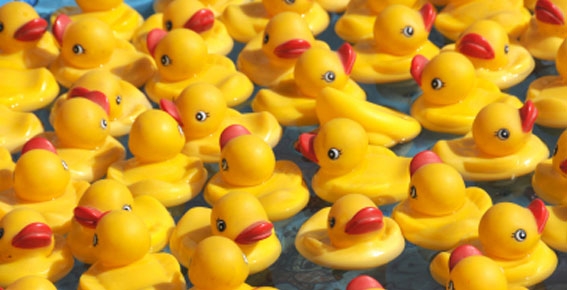Throw Out Your Old Plastic Toys!
At Sprout we often find that being “green” as in “good for the environment” can conflict with creating a healthy home for our children. When this conflict arises, we see no choice but to protect our families first and worry about the environment later. Some of you may not agree, but protecting children from the toxins in their environment is why Sprout was founded.
I am aware this recommendation is extremely “ungreen,” but PLEASE through away all the plastic toys in your house that could have been manufactured before 2009. This means all hand me downs or toys from an older sibling. If you choose to donate them rather than throw them away, you will be saving them from landfills but potentially harming a child less fortunate than your own.
Most parents have no idea that a new law went into effect concerning children’s toys in December 2008. You probably didn’t hear, because the media didn’t seem to care. However, the CPSIA act banned chemicals called phthalates from all children’s toys manufactured after February 2009. PLEASE NOTE: this only applies to toys manufactured after that date. There is no mandate for retailers to remove these older toys from their shelves, and there is no way to tell the difference. I would suggest not buying any plastic toys unless the packaging specifically says “No Phthalates,” which many boxes now do.
Phthalates are a group of endocrine-disrupting chemicals commonly used to render plastics soft and flexible. They can be inhaled or ingested and are often found in indoor air and dust. Phthalates not only can leach off into a child’s mouth, but can end up on your household’s floor where your child is crawling around and then putting his fingers in his mouth. Evidence of phthalates has been found in blood, urine, and even breast milk.
Phthalates have been shown to disrupt the development and functioning of male and female reproductive systems. This can lead to early puberty and breast cancer in females and low sperm count and other reproductive problems in males. These are just some of the effects that have been proven in both animal tests and in human observations. This was enough proof to lead to the 2008 government ban, though obviously not enough to catch the media’s attention. Read more about phthalates and endocrine disruption at here.
The CPSIA Section 108
Three phthalates, DEHP, DBP, and BBP, have been permanently prohibited by Congress in concentration of more than 0.1% in “children’s toys” or “child care articles.” A “children’s toy” means a product intended for a child 12 years of age or younger for use when playing, and a “child care article” means a product that a child 3 and younger would use for sleeping, feeding, sucking or teething
Three additional phthalates, DINP, DIDP, and DnOP, have been prohibited pending further study and review by a group of outside experts and the Commission. This interim prohibition applies to child care articles or toys that can be placed in a child’s mouth or brought to the mouth and kept in the mouth so that it can be sucked or chewed that contains a concentration of more than 0.1% of the above phthalates. Unbanned phthalates can still be used in children’s toys. Phthalates can be used in toy packaging and the above interim banned phthalates can be used in any toy that can not fit inside a baby’s mouth and stay there.
Sprout has a great selection of Toys that are free from toxic chemicals.


